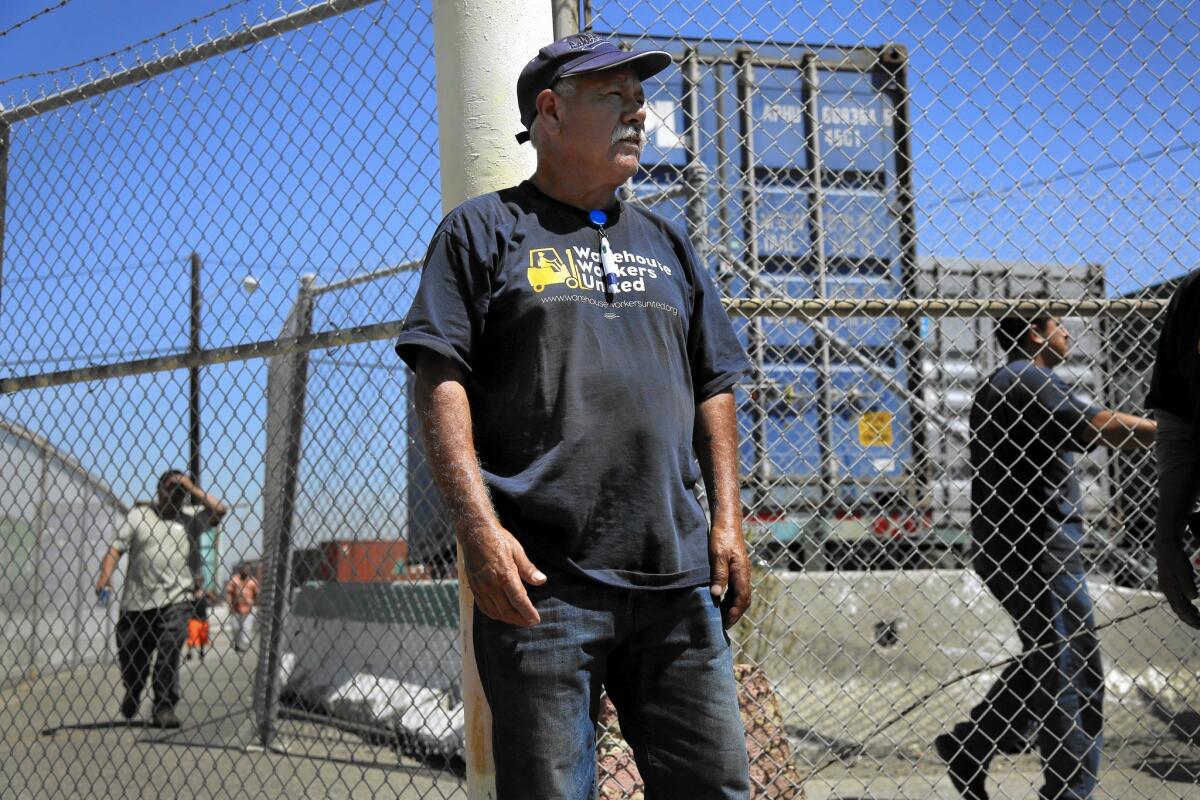NLRB ruling on third-party employers could be a game changer for unions

Unions and other labor advocates are brainstorming strategies in the wake of a National Labor Relations Board ruling that could strengthen the hand of those at the lowest level of key industries including warehousing, construction, fast food and home healthcare.
The NLRB said Thursday that a Silicon Valley recycling center was a “joint employer” along with the staffing agency that provided the center’s workers. The ruling determined that companies using workers hired by another business, such as temp agencies, contractors or even fast-food franchisees, are still responsible for labor violations and could be required to bargain with unions representing those employees.
That finding, which is sure to be tested in the courts, gives a boost to labor groups, which have scored victories in recent years with highly choreographed nationwide protests for better pay in traditionally minimum-wage industries such as retail and fast food, analysts say. It could also help increase union membership, which has been on the decline.
“It’s a seismic shift,” said Victor Narro, project director at the UCLA Labor Center. “This is not focused just on labor organizing, but every kind of labor law.”
The decision could spark huge aftershocks in the American workforce, where companies scalded by the recession have increasingly turned to temporary workers, who often lack health benefits and can be shed at a moment’s notice.
Nationwide, there were about 3.4 million so-called staffing-agency jobs, or 2.25% of total national employment, according to the National Employment Law Project, which advocates for low-wage workers. The sector grew 41% from 2008 to 2012.
The numbers probably are much higher, but the government doesn’t keep track of workers at subcontractors, which are common in a wide variety of industries, said Cathy Ruckelshaus, the group’s general counsel.
“It’s happening in hotels, in hospitals,” Ruckelshaus said. “Wherever there are a lot of workers in a business, there is a lot of this contracting out.”
Worker advocates say the ruling could have a profound effect on organizing movements, changing which workers are recruited, what tactics are deployed and even the broader goals to be reached.
The Warehouse Worker Resource Center usually must file lawsuits in its efforts to improve conditions for laborers at Southern California’s sprawling retail distribution centers, co-director Sheheryar Kaoosji said.
The Ontario-based organization, which doesn’t become involved with collective bargaining, largely exists because the warehousing industry is flooded with temporary agencies, making it “very difficult” to unionize, he said.
“This is a big deal,” he said. “Warehousing companies make efforts to try to separate from their workers by saying, ‘We are not responsible’” for employees hired through staffing agencies.
For three years, Edelberto Zamora drove a forklift at a Long Beach warehouse. He had to line up every day to wait for sporadic hours because Zamora was employed by a contractor, not the warehouse operator, which gave preference to its own employees.
Then three months ago, the 41-year-old was hired directly by the warehouse company, and now he’s guaranteed work every day. Zamora said he hopes others toiling for subcontractors will get the same security he now enjoys.
“Our families would have a better life,” he said on Friday during a lunch break.
The decision will bolster future lawsuits brought by warehouse workers, making it easier to prove that both a staffing firm and its client companies are responsible for unsafe working conditions, wage theft or other violations, Kaoosji said.
A handful of lawsuits brought by the organization, including one case that Wal-Mart settled last year with workers at a Riverside County warehouse complex, have argued that point, but those cases are complex, he said. The NLRB ruling has lowered that bar, increasing the odds of winning future lawsuits.
The ruling has also opened up another avenue of recourse: lodging a complaint with the NLRB itself, Kaoosji said.
“We have tried in the past,” he said, “but it’s much more likely to prevail by arguing that workers are jointly employed.”
Industries such as warehousing, construction and home healthcare, which commonly turn to temp agencies, could see a rise in nascent efforts to collectively bargain, labor experts said.
“Those workers now have an opportunity to more easily form labor organizations,” said Harris Freeman, a labor law expert at Western New England University’s School of Law. “There are a lot of low-wage workers whose situations are not going to appreciably change without unionization or collective bargaining.”
Unionizing can be an attractive way of seeking higher pay and more security, especially as many temp agencies are “fly by night” operations that will disappear at the first whiff of trouble, UCLA’s Narro said.
“Now you can go straight to the company that employed the subcontractor,” with actual power to fix problems or raise pay, he said. “It makes it easier to go after bigger companies.”
Making Change at Walmart, a worker advocacy group, is scrutinizing its own organizing efforts — and could possibly recruit employees at subcontractors all along the supply chain instead of just Wal-Mart store employees, said one campaign representative who requested anonymity to talk about strategy.
“With this ruling, the potential reach of workers could be exponentially higher,” the representative said. “If we could impact and change Wal-Mart, it could impact working conditions of subcontractors,” he added. “The more the merrier as far as people who can be helped.”
Making Change at Walmart has focused on orchestrating highly public rallies and protests that have seized headlines and highlighted the plight of minimum wage workers. The retailer said in February that it was raising its minimum pay to $9 an hour for nearly 40% of its American workforce.
But the organization will reconsider whether to push for unionizing, a strategy that has taken a back seat in recent years, the representative said. “We will be taking a very close look at collective bargaining and whether it’s a good strategy,” he said.
Labor movements still face many hurdles in organizing workers into unions.
Election rules for unions under the National Labor Relations Act are still “arcane and lengthy,” Ruckelshaus said. Elections can take months, during which employers can often discourage or scare workers. In businesses with high turnovers, she said, momentum could disappear by the time an election is actually held.
Times staff writer Chris Kirkham contributed to this report.
MORE BUSINESS NEWS
Will Wall Street turmoil affect the Southern California housing market?
Secretary of Defense unveils $75-million investment in Silicon Valley venture
Column: Here’s why drugmakers are held in low esteem
More to Read
Inside the business of entertainment
The Wide Shot brings you news, analysis and insights on everything from streaming wars to production — and what it all means for the future.
You may occasionally receive promotional content from the Los Angeles Times.












